The Amazon experiences a contradiction when it comes to water. Home to the largest river basin in the world, a large portion of its population lacks access to drinking water. According to 2023 data produced by the Instituto Brasileiro de Geografia e Estatística (IBGE) [Brazilian Institute of Geography and Statistics], only 60% of the region's inhabitants have access to the general water supply network. In rural areas, the percentage is exponentially lower: only 18.9% of people have access to water.
Some initiatives, both governmental and non-governmental, aim to improve this access. The most prominent of such initiatives was taken by the federal government, by means of the Programa Cisternas, do Ministério do Desenvolvimento e Assistência Social, Família e Combate à Fome (MDS) [Cisterns Program, of the Ministry of Development and Social Assistance, Family and Fight against Hunger].
The program began in 2003, initially serving the Northeast region, which has historically suffered extreme droughts due to its semi-arid climate. About ten years ago, the program expanded to the Amazon, implementing the so-called social technologies for low-income rural families affected by regular water shortages or drought.
MAMIRAUÁ
The Cisterns Program is implemented by virtue of partnerships implemented between the MDS (Municipal Department of Social Development) and federal entities or third-sector organizations. One of the non-governmental organizations taking part of the program is the Instituto Mamirauá [Mamirauá Institute], from Amazonas state, which also has other areas of activity in the circumscription.
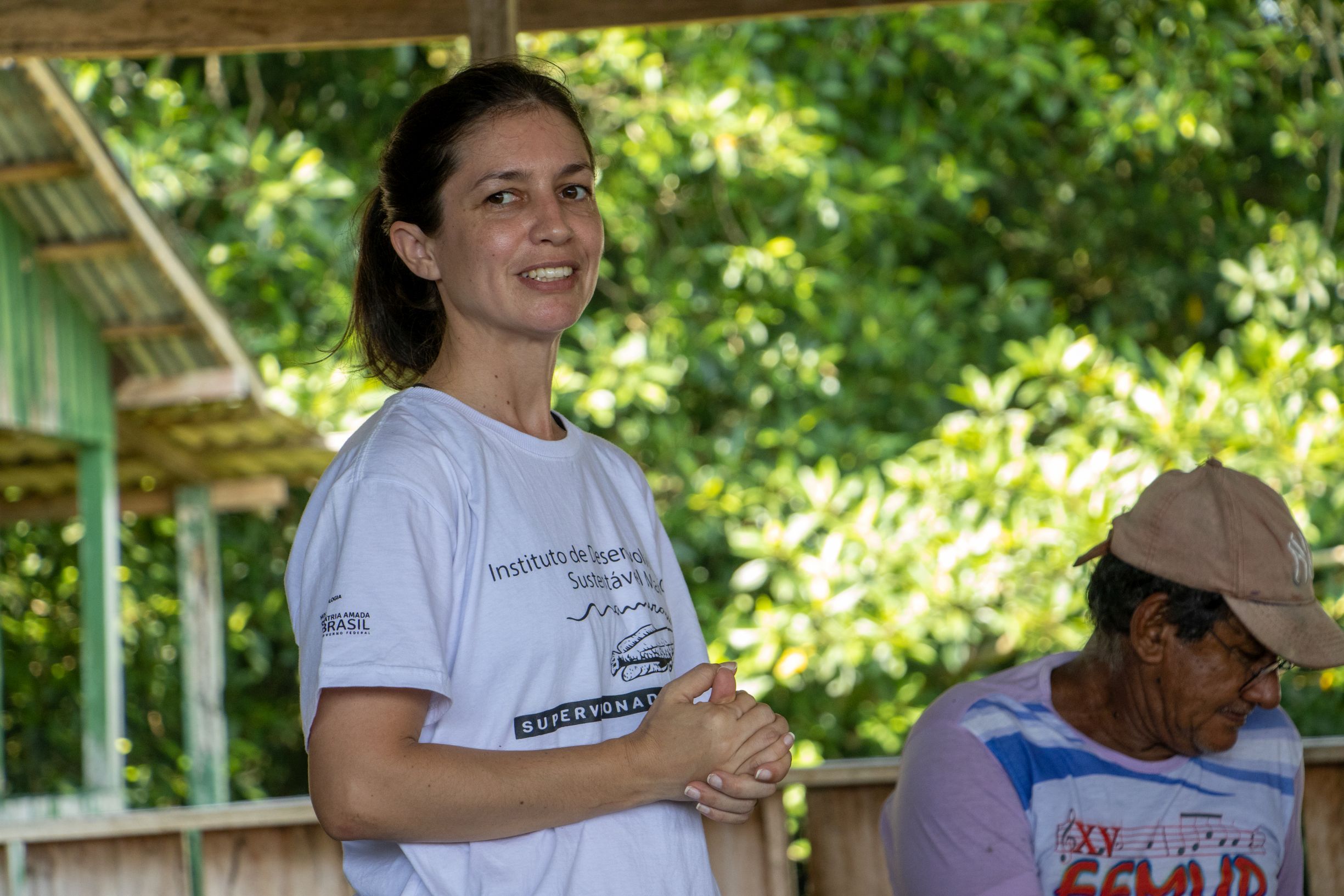
"The Mamirauá Institute works on three fronts to improve access to water in communities: rainwater harvesting, river water pumping, and home water treatment," explains Maria Cecília Gomes, coordinator of the institution's Programa Qualidade de Vida [Quality of Life Program].
The projects embraced by the institute have already benefited 22 communities in municipalities such as Alvarães, Uarini, and Maraã, in the Reservas de Desenvolvimento Sustentável (RDSs) [Sustainable Development Reserves] located in Mamirauá and Amanã, in Amazonas.
Approximately 1,300 people have benefited from these technologies. "We carry out all the necessary actions: we install the technologies, conduct educational activities, monitor water quality, ensure the functioning of the installed equipment, and manage it jointly with municipal governments," says Cecília. In addition to rainwater harvesting systems, the Institute has already implemented five solar-powered river water pumping systems.
The Institute has also created an emergency water treatment kit during dry periods, when water becomes cloudy and scarce. Approximately 300 units were distributed during the 2023 drought. The idea was so successful that, in 2024, some Amazonian municipalities began distributing the kit, with specific guidance from the Institute. Approximately 5,000 units were distributed to families, benefiting approximately 25,000 people.
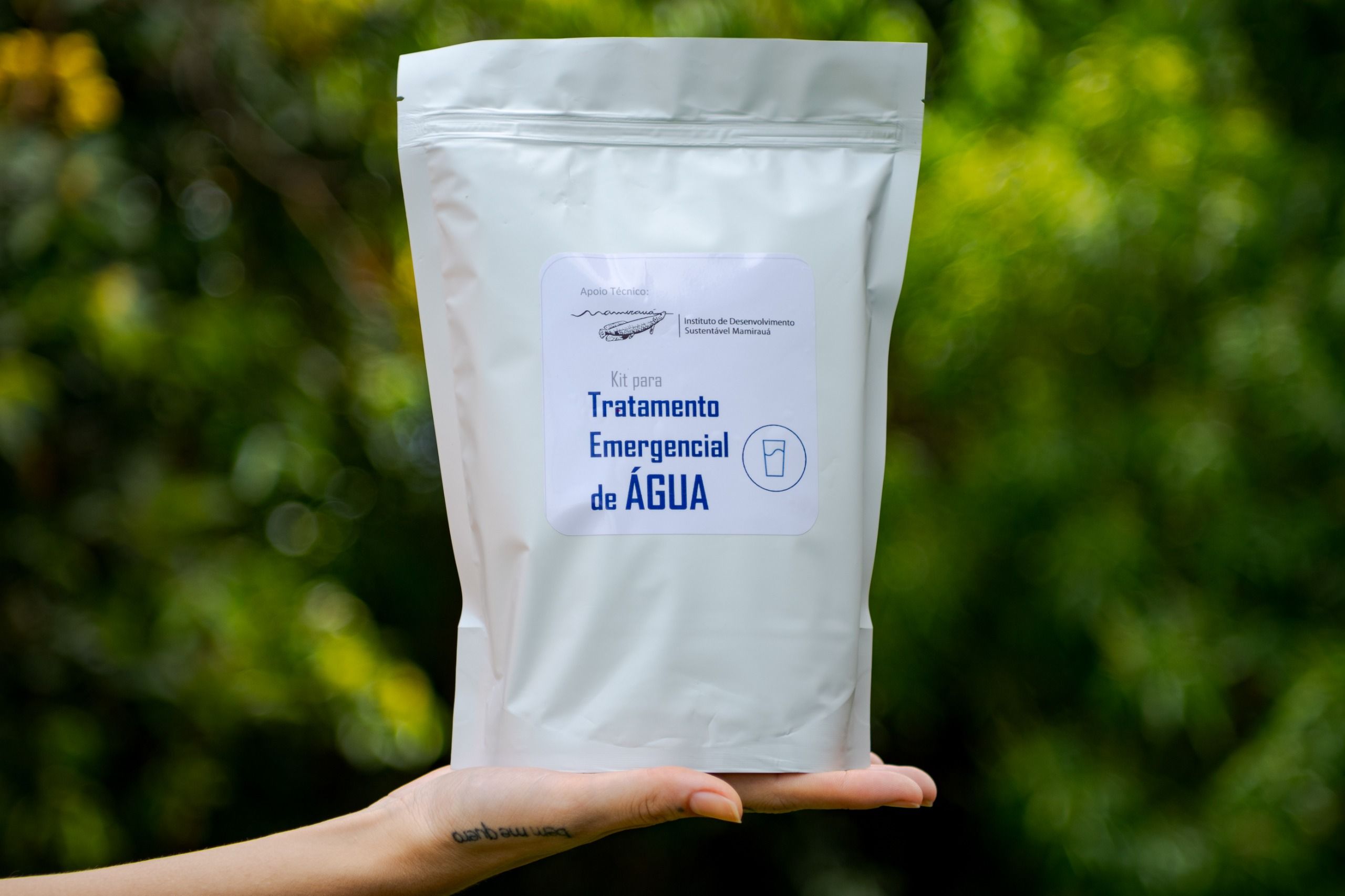
Showers at any time
One of the communities benefiting from the technologies implemented by the Mamirauá Institute was Nova Colômbia, in the Mamirauá Reserve, in the municipality of Tefé, Amazonas. Larissa Benchimol, a teacher in the community, says the technology they received was solar-powered river water pumping.
"The system draws water into a large tank in the middle of the community. When this tank fills, it releases the water to pass through a filter, because the water is extremely muddy, and then it flows to all the houses. We fill the tank twice a day, and it goes directly to the taps. And for consumption, drinking, and food, we use another filter inside the house, which the Institute also provided to most of the community," she explains.
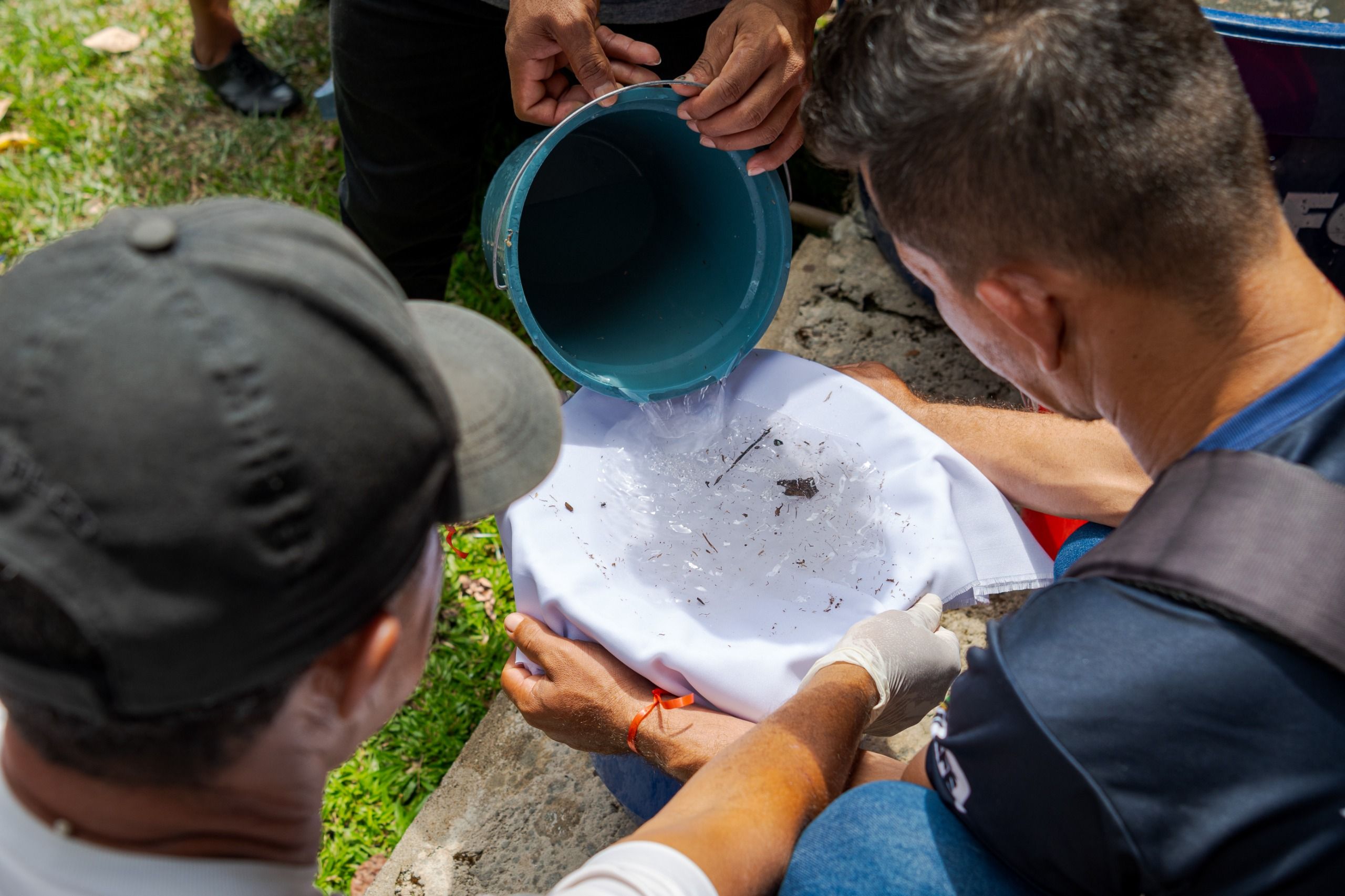
Larissa highlights the impact the technology has had on the community. "Our situation has changed a lot. We used to collect river water in buckets in the hot sun, strain it through a cloth, and then treat it with chlorine. Now, we come home and have enough water to shower as many times as we want, because, in previous times, we only had it once a day. We have water for food, bathing, brushing our teeth—everything," the resident celebrates.
Sanear Amazônia Project will benefit 15,000 people
Another initiative, related to the MDS Cisterns Program, is the Sanear Amazônia Project. Developed in partnership with the Conselho Nacional dos Extrativistas [National Council of Extractivists] and the Memorial Chico Mendes (MCC ) [Chico Mendes Memorial] in Manaus, with investments from the Programa de Aceleração do Crescimento 3 (PAC 3) [Growth Acceleration Program 3] and Fomento Rural [Rural Development], the project aims to implement 3,476 drinking water access systems by 2026 in five Amazonian states, benefiting approximately 15,000 people.
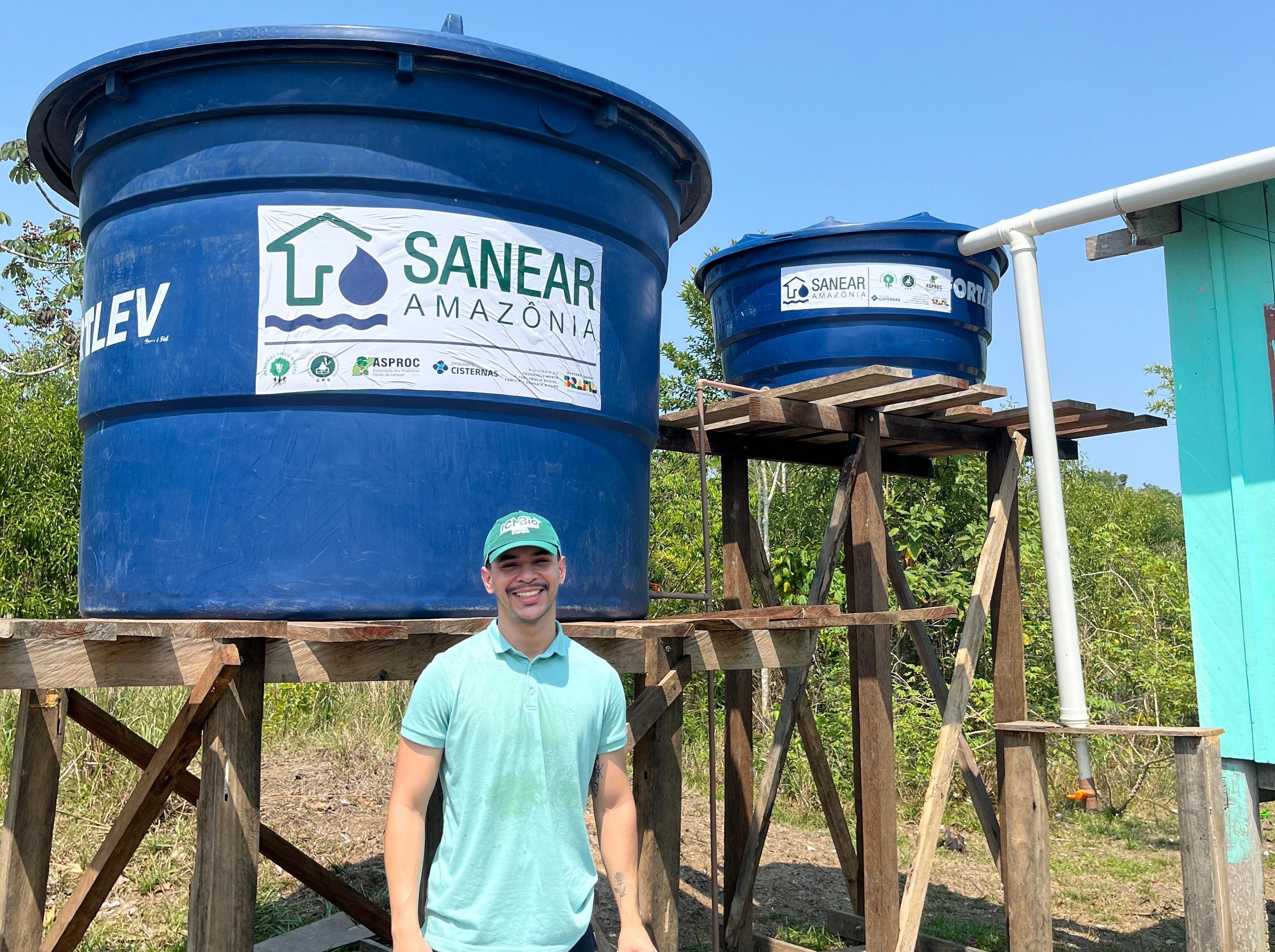
According to Willians Santos, the project coordinator for the MCC, 4,074 people have directly benefited from the technologies implemented in Amazonas, Pará, Amapá, Acre, and Rondônia.
Each state has a local implementing agency responsible for implementing multipurpose rainwater systems, which collect rainwater, dispose the first runoff, which contains impurities, and connect water points in homes. "The project also includes home sanitation installations and the delivery of clay filters and complementary water treatment systems," adds Santos.
Suely Trindade, from the Igarapé Grande community in the municipality of Manicoré, Amazonas, recalls the difficulty she used to have in accessing water. "We would go to the river at night to fetch water. It was dangerous. Once, here, at home, I laughed, but then I cried, because the water would just drip into the tank. We slept without showering and only had a little to drink. Can you imagine? So little water for so many people. We were very happy to receive the system," she says.
SCENARIO
Willians Santos comments that, despite the fact the Amazon contains approximately 20% of the planet's surface freshwater, thousands of people still lack access to drinking water. "This is because many of these communities live in isolated areas without a public water supply network.
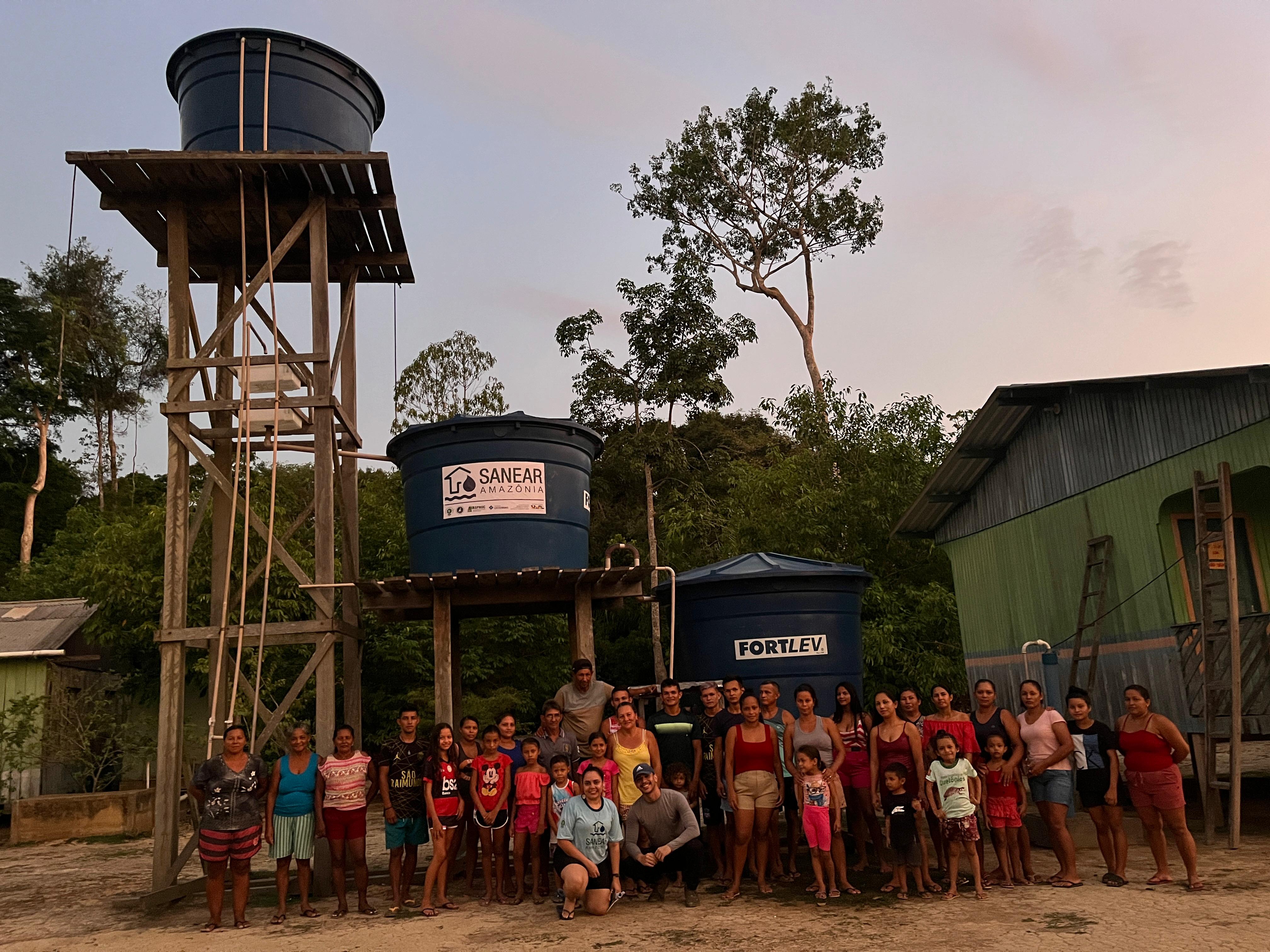
The available water comes from rivers and streams, which are often contaminated by sewage, mercury, or other factors, making them inappropriate for use," she observes.
For Maria Cecília Gomes, of the Mamirauá Institute, there is a lack of investment in this area, but this has been reversed with the Cisterns Program in various Amazonian states. "The implementation model prioritizes local organizations and the use of adapted technologies, which would not pass the test of traditional sanitation," she explains.
DROUGHT
For Cecília, social technologies for access to drinking water become even more important in the face of events caused by climate change. "The droughts of 2023 and 2024 pushed the population's adaptive capacity to the limit. Floods and droughts in the Amazon are expected, but what happened in these years has shaken even the floodplain communities, who live with the rising and falling water levels. This new context demands water storage, something that has never been a priority in the region; it also highlights the need for climate-resilient sanitation projects; and finally, it highlights the need for energy independence for water access, using solar energy," she emphasizes.
Ufra and UFPA work in communities
Professor Vânia Neu, a researcher at the Hydrobiogeochemistry Laboratory at the Federal Rural University of the Amazon (Ufra), is responsible for a project that has already provided water supply systems to 15 families on Ilha das Onças, in Barcarena; to a development on Combu Island, in Belém; and to a school in Marapanim.
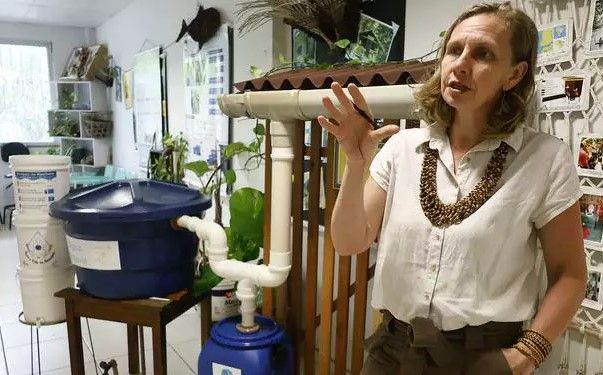
The technology is similar to that used by Project Sanear Amazônia: rainwater falls on the roof, runs down a gutter, and is directed to a storage system that discards the first cubic millimeter of water, which contains leaves and other solid waste. The remaining collected liquid goes to a water tank and is then piped to homes. Before being consumed, it undergoes disinfection with sodium hypochlorite and a felt-coated activated carbon candle. The system uses no energy, only gravity.
"The rainwater harvesting system transforms the reality of communities and of people affected by inequality, by restoring the fundamental right to access to health, dignity, and quality of life," says the professor.
The Federal University of Pará (UFPA) is another higher education institution in Pará which has already introduced similar technology to riverside communities. The Grupo de Pesquisa Aproveitamento de Água da Chuva na Amazônia, Saneamento e Meio Ambiente na Amazônia [Rainwater Harvesting in the Amazon, Sanitation and Environment Research Group in the Amazon], affiliated with the university's Núcleo de Meio Ambiente [Environmental Center] and coordinated by Professor Ronaldo Mendes, implemented the system on Campompema Island, in Abaetetuba, and also in locations in western Pará, benefiting approximately 150 people.
RAINWATER
Like the Ufra system, the UFPA system uses rainwater, discharging the first water and directing it to taps, where it is then disinfected. According to Professor Ronaldo Mendes, rainwater has advantages over river water or even groundwater.
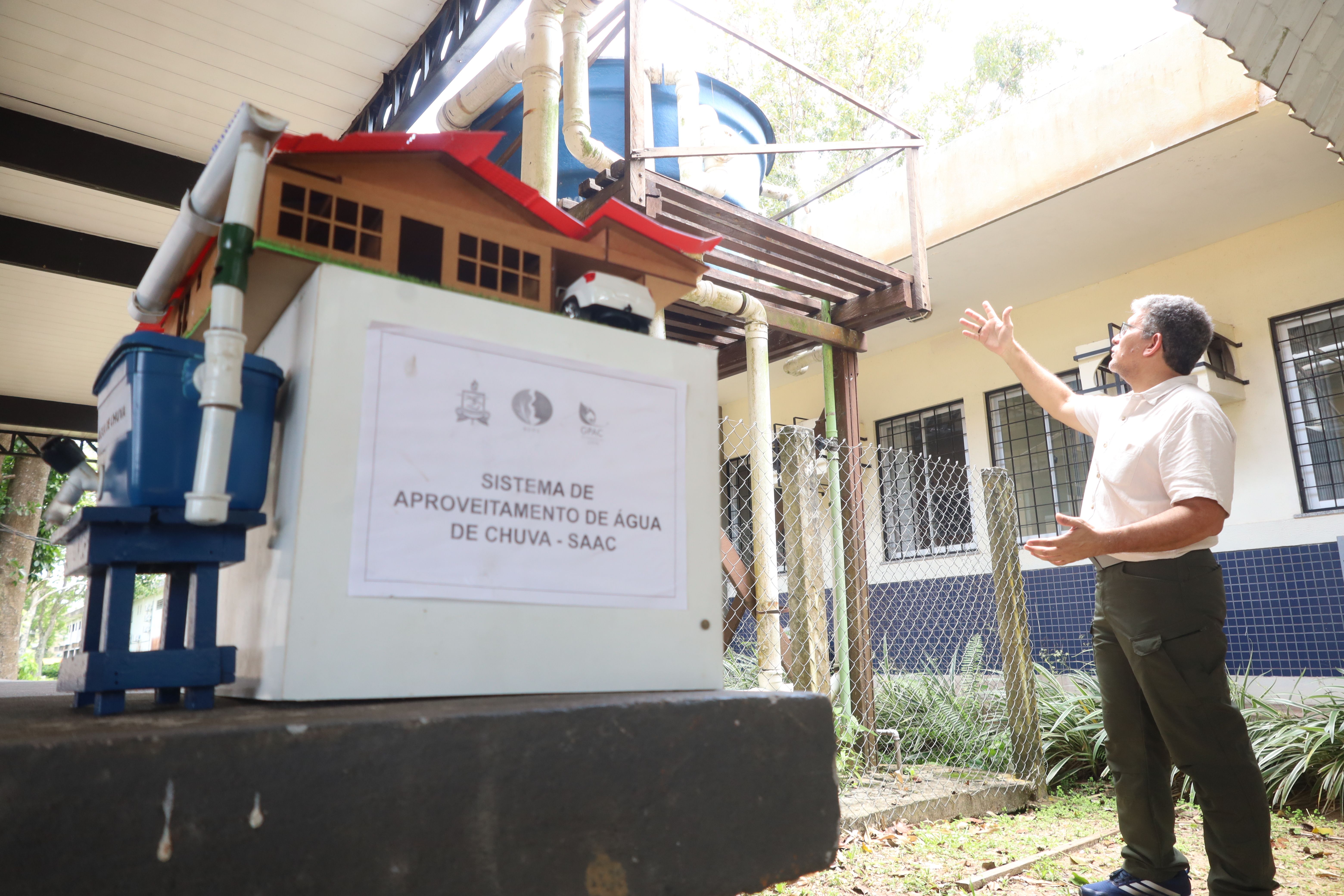
"Rainwater is much easier to make potable. It's much closer to drinking water than river and stream water and requires only relatively simple procedures, such as filtration and chlorination. However, in rivers and even groundwater, the presence of microplastics is higher. And other substances can accumulate in these waters, such as hormones, medications, or feces," he explains. "Another advantage is that this system doesn't require electricity, as many communities lack this resource," he adds.
For the researcher, rainwater harvesting is an excellent alternative for providing access to drinking water, especially during periods of extreme drought, storing it during the rainy season for consumption during the dry season.
Rosilda Nascimento, a housewife and resident at Ilha das Onças, received the technology from Ufra and compares the before and after experiences. "In the past, it was a huge challenge. We only received 60 liters of water from the city per week, which wasn't enough for a family. Sometimes, we had to fetch water from the river for consumption. Because those 60 liters were just for drinking, we couldn't cook or blend açaí. We drank açaí blended with river water. We lived in filthy clothes because we had to wash them in the river. It was a huge improvement for the families who benefited. Today, we have quality water for drinking, cooking, blending açaí, bathing, and washing clothes. It's changed our lives," he says thankfully.
UNIVERSAL RIGHT
Professor Ronaldo Mendes points out that access to water is a universal right, guaranteed by the Brazilian Constitution. "Unfortunately, the Brazilian State still doesn't guarantee this universal access. The university is working to ensure this right is effectively guaranteed, finding real ways to make it happen. We intend to combine the right to water with our ability to develop technologies, working with communities, to make this happen. Rainwater literally falls on our heads. You don't need a pump or to go after it. It goes where you are. Therefore, we understand that the use of rainwater expands the possibilities of guaranteeing communities' right to drinking water," he states.
INSTITUTIONAL PARTNERSHIP
The production of Liberal Amazon is one of the initiatives of the Technical Cooperation Agreement between the Liberal Group and the Federal University of Pará. The articles involving research from UFPA are revised by professionals from the academy. The translation of the content is also provided by the agreement, through the research project ET-Multi: Translation Studies: multifaces and multisemiotics.